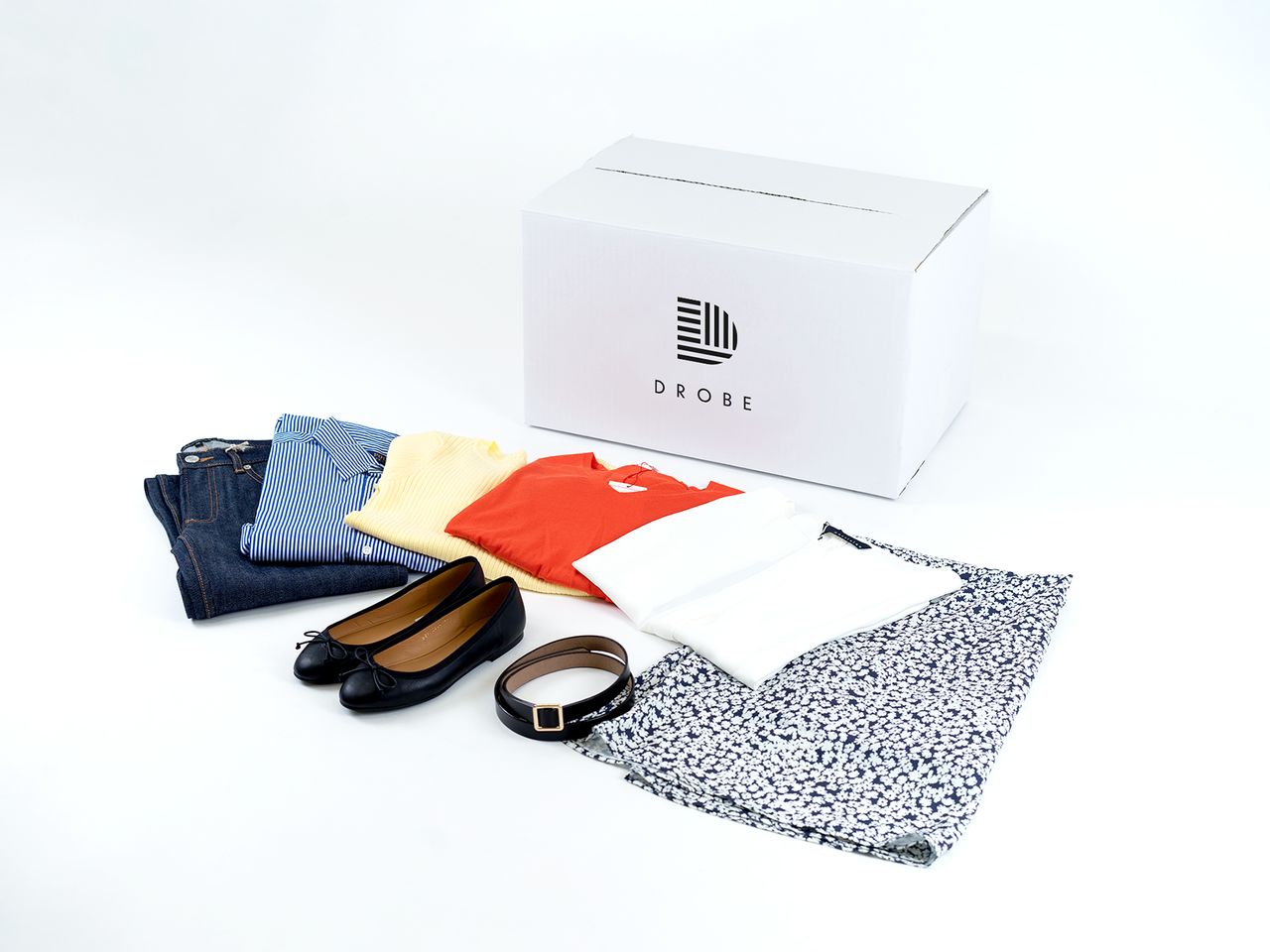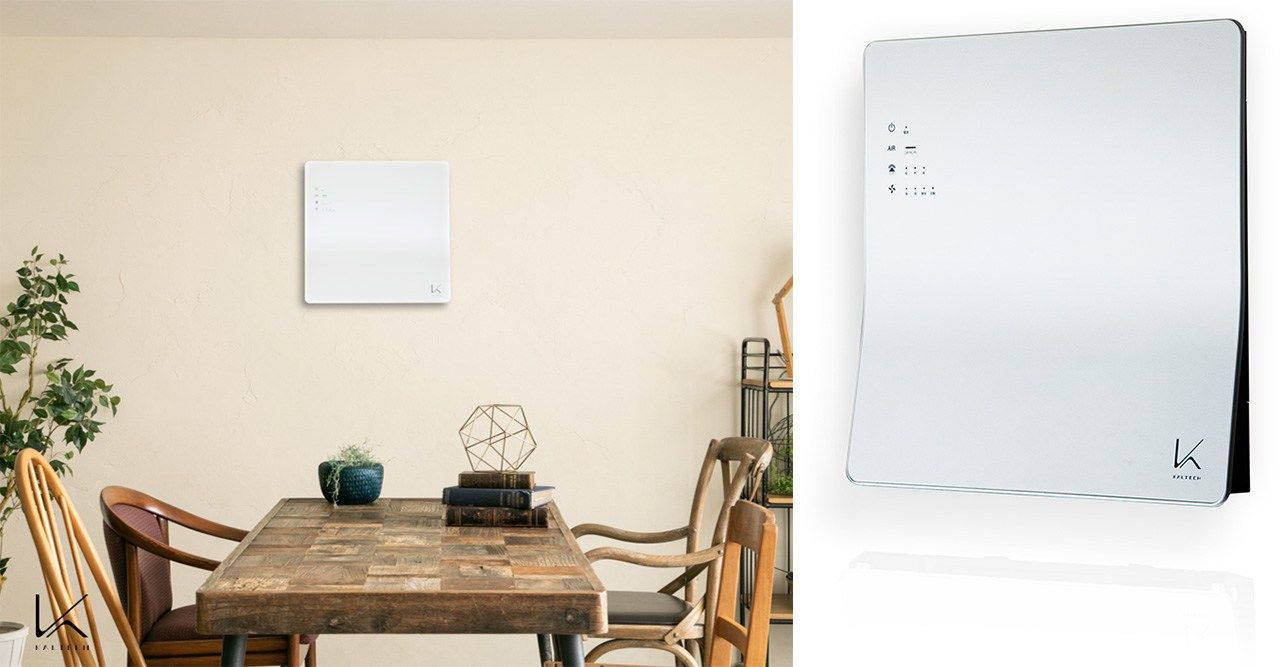The coronavirus crisis and the “stay home” policies that have ensued have sparked new consumer trends promoting a more stylish, extravagant, and comfortable home environment. Compelled to spend more time at home due to restrictions on outings and the curtailment of restaurant and service businesses, people are exploring new lifestyles and evolving new patterns of consumption for the necessities of food, clothing, and shelter.
Breaking Up the Monotony of Home
Even while people are voluntarily refraining from going out during the pandemic, they are still seeing each other in online business meetings and online get-togethers for drinking and conversation. As the days of self-isolation stretch into weeks and the weeks into months, more and more people are getting dressed up for their online encounters as if to show that their life at home is fulfilling and enjoyable.
This has boosted sales for online clothing shops Drobe, which offers customers the added service of a personal stylist who selects flattering outfits for online meetings and get-togethers. A subsidiary of Mitsukoshi Isetan Holdings, Drobe is headquartered in Shibuya, Tokyo. When a state of emergency for all of Japan was declared in April, new applications for Drobe membership more than doubled over what they had been in January.
New Drobe members register their preferred brands, monthly budget, and photos of their favorite outfits. Based on this information, a stylist applies artificial intelligence technology to offer a personalized selection that is sent by courier service to the customers, who only need to pay for those items that they actually like.
With more and more people teleworking from home, there has been a distinct drop in demand for suits and neckties. But thanks to Drobe’s clever sales approach, a new market has begun to emerge where people can enjoy apparel fashion in the comfort of their own homes, on and off the job.

A sample of stylist-selected clothing items in a Drobe courier service box.(Courtesy of Drobe)
In the city of Nagoya many residential areas have high-end supermarkets like Seijō Ishii, known for its selection of imported products, and Frante, famous for its rich assortment of high-grade food items. These chains have seen sales soar since the national emergency declaration in April.
Yamanaka, the parent company of the Frante chain, reports that sales at its eight Frante supermarkets from April 21 to May 17 was up 20% over the same time last year. Frante supermarkets in particularly affluent neighborhoods showed a more than 30% increase.
Prices have dropped for luxury food items due to the decline in demand as restaurants close and parties and events are cancelled, but they remain high compared to general supermarket food items. Still, people are putting many of these luxury foods on their tables in an effort to break up the monotony of having to stay home during the pandemic. The increase in sales is most likely due to this trend.
“Since we’re all spending more time together as a family, it’s only natural that we would like to enjoy a nice meal once in a while,” says a businessman who frequently shops at the luxury supermarkets in Nagoya. “We can’t eat out much right now, so we’ve certainly got the money.”
A Virus-Battling Air Purifier
Stylish and high-performance air purifiers are attracting attention in these days of the coronavirus. One example is the Turned K wall-mounted sanitizer/deodorizer manufactured by Kaltech Corporation, a home appliance venture business based in Osaka that was launched in December last year by a group of former Sharp engineers.
Turned K uses photocatalytic technology to accelerate the breakdown of viruses and mold into water and carbon dioxide. In tests conducted at the Kitasato Research Center for Environmental Science, it was found that Turned K could eliminate nearly 99.9% of the influenza viruses in a room.
The unit has a clean, white design and is small, measuring only 44 centimeters high, 42 centimeters wide, and just 8.8 centimeters thick. Switches are discreetly placed on the side. Compact and unobtrusive, the unit blends in nicely in just about any home environment, whether living room or study.
Prior to the pandemic, air purifiers were equipped with filters and generally cost between ¥10,000 and ¥30,000. Most people bought them to rid their homes of pollen during hay fever season.
In contrast, Turned K’s retail price is around ¥60,000 before tax, making it much more expensive than conventional air filters. But it has been selling well since the pandemic began, and sales continue to increase. To meet the growth in demand, Kaltech more than doubled its monthly production in May to some 15,000 units.

Kaltech’s wall-mounted sanitizer/deodorizer Turned K. (© Kaltech Corporation)
The growing demand for stylish, high-performance air purifiers is another new consumer trend, one specific to the “shelter” or “home” of the three necessities of food, clothing, and shelter. It is an obvious indication of the growing desire, given the still ongoing pandemic and the extended time people are spending at home, to combat uncertainty by keeping the home as clean, safe, and comfortable as possible.
New Consumption Lifestyles in the Post-Coronavirus Era
How will the COVID-19 pandemic change consumer trends?
On May 25, the Japanese government lifted the state of emergency for the Tokyo metropolitan area and Hokkaidō, marking the end of the nationwide state of emergency that had been in place for a month and a half since April 7. Hereafter, we will be seeing a gradual easing of restrictions on unnecessary outings and business operations.
Still, the consumption trends supporting new lifestyles focused on the home are likely to continue.
Despite the lifting of the emergency declaration, unease remains as people brace for a second, and maybe even a third, wave of COVID-19 cases. The old life in which we were able to go where we pleased when we pleased, gathering with others, is not going to come back until an effective vaccine becomes available.
At the same time, the crisis has led to new and creative lifestyles including online drinking parties and teleworking. Not a few people have rediscovered the importance of family ties as well. People are unlikely to give up the new ways of enjoyment and convenience that are emerging in the crisis. Even after we are released from our self-imposed “house arrest,” the home will probably continue to remain the focal point of work and consumption.
Demand for high-performance household appliances and stylish furniture and lighting may well continue to grow. We will probably see similar growth in products and leisure activities that can be enjoyed closer to home, such as bicycles, sports equipment, and outdoor activities.
Likewise, we will probably see more and more retailers and restaurant businesses competing to provide products and services that can be enjoyed at home. The restrictions on going out and the closure of many restaurants and businesses as we fight the spread of the coronavirus has caused a steep drop in consumption, but the latent desire to go out and eat out remains strong. Numerous businesses have already caught on to this and are exploring new and creative options.
Consider, for example, the advent of 5G next-generation telecommunication technology that is 20 times faster than the wireless networks available now. This will allow for high-speed, high-volume downloads, such as the downloading of a two-hour movie in just three seconds. We are likely to soon see this high-speed technology used to distribute films of concerts and sporting events. We will probably also see the Internet play a greater role in providing educational and medical services.
The new consumer trends emerging out of the coronavirus crisis are the fetal movements of a postpandemic world of consumption.
(Translated from Japanese. Banner photo: Friends get together for an online drinking party, one of the many new trends emerging in the changing environment of the coronavirus pandemic. © Aflo.)
"consumption" - Google News
June 23, 2020 at 07:14AM
https://ift.tt/2Ypr3uf
Consumption in the Post-COVID-19 World: From “Staying at Home” to “Enjoying at Home” - Nippon.com
"consumption" - Google News
https://ift.tt/2WkKCBC
https://ift.tt/2YCP29R
Bagikan Berita Ini














0 Response to "Consumption in the Post-COVID-19 World: From “Staying at Home” to “Enjoying at Home” - Nippon.com"
Post a Comment